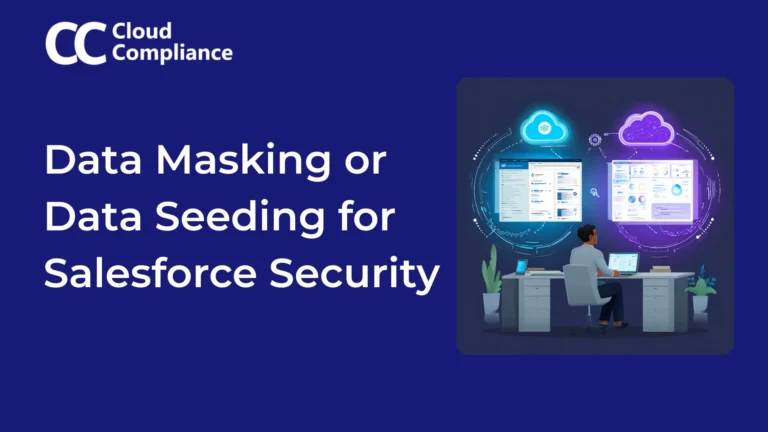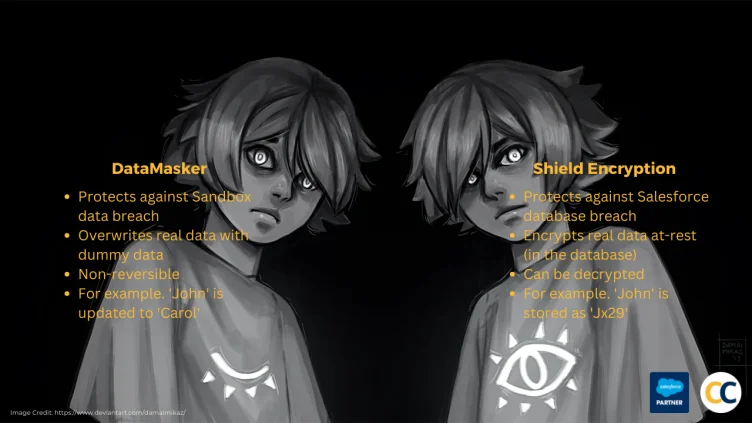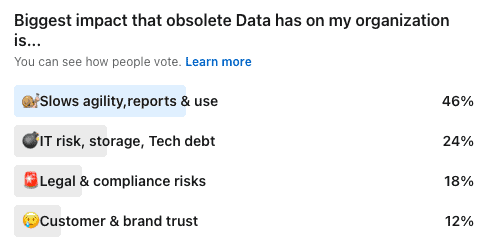
Data Masking vs Data Seeding in Salesforce: Which Approach Actually Protects Your Sensitive Data?
Data masking vs data seeding: Which approach keeps your Salesforce sandbox secure while enabling development teams?

Why should you read this?
Because in the realm of data security, especially concerning Salesforce, understanding the holistic approach to data protection is not just beneficial – it’s essential.
Today, we delve into the legal and business implications of data incidents and breaches, emphasizing the inseparability of various elements and teams involved in these critical situations.
Prefer videos over reading? Check out this 5-minute clip on safeguarding your Salesforce data with the 3-bucket strategy.
Visualize data protection in Salesforce as a three-bucket strategy. Each bucket represents a distinct phase in the lifecycle of data incident management: before, during, and after a breach.
Let’s explore each bucket in detail.
Preparation is key. As privacy advisors and lawyers often emphasize, the more you prepare beforehand, the smoother the management during a breach.
This preparation involves:
Read more about Cloud Compliance’s Data Minimization and Retention here.
Consider data minimization as an environmental effort akin to reducing plastic usage. The less unnecessary data you collect, the lower the risk of a breach.
This is crunch time. Operating under tight constraints and limited knowledge, quick and effective decision-making is crucial. Key points to remember:
Remember, managing a data breach is a dynamic process, requiring agility and clear leadership.
Often overlooked, the post-breach phase is critical.
It involves:
This phase is about turning lessons into actionable improvements, ensuring better preparedness for future incidents.
Data protection in Salesforce, or any platform, is a cyclical process. It’s about continuously improving your strategies and responses in each phase of the data breach lifecycle.
Just like in military training, where every operation is followed by a debrief, in data protection, every incident should lead to learning and adaptation. Embrace this three-bucket strategy to enhance your Salesforce data security and ensure your organization is always one step ahead in data protection.
Check out Cloud Compliance Product for Data Minimization and Retention on Salesforce AppExchange to minimize the data storage.

Saurabh is an Enterprise Architect and seasoned entrepreneur spearheading a Salesforce security and AI startup with inventive contributions recognized by a patent.

Data masking vs data seeding: Which approach keeps your Salesforce sandbox secure while enabling development teams?

Explores how data masking is key to strengthening your Salesforce security.

Table of Contents Salesforce provides businesses with the ability to protect their data from unauthorized access, both through Salesforce Shield Encryption and Sandbox Data Masking with DataMasker.

Disclaimer: To all readers, please note that this not legal advice, nor is this coming from Salesforce. This is strictly my personal opinion and perspective

Marathon runners obsess over their socks and shoes – because to outdo their past performance, they need to take advantage of everything at their disposal.

Reducing Salesforce data footprint directly reduces the cost and risks of potential data leaks and embarrassment, as well as benefits your organization. Here are

We earlier talked about reducing production data. The third step to reducing data in your Salesforce org is to define retention policies. The idea here

We talked earlier about masking sandboxes. The second step is to reduce production data. The idea here is that obsolete information in your Salesforce production

Why should you mask data in Salesforce and what kind of data should you be masking to ensure security, compliance and trust. Let’s take